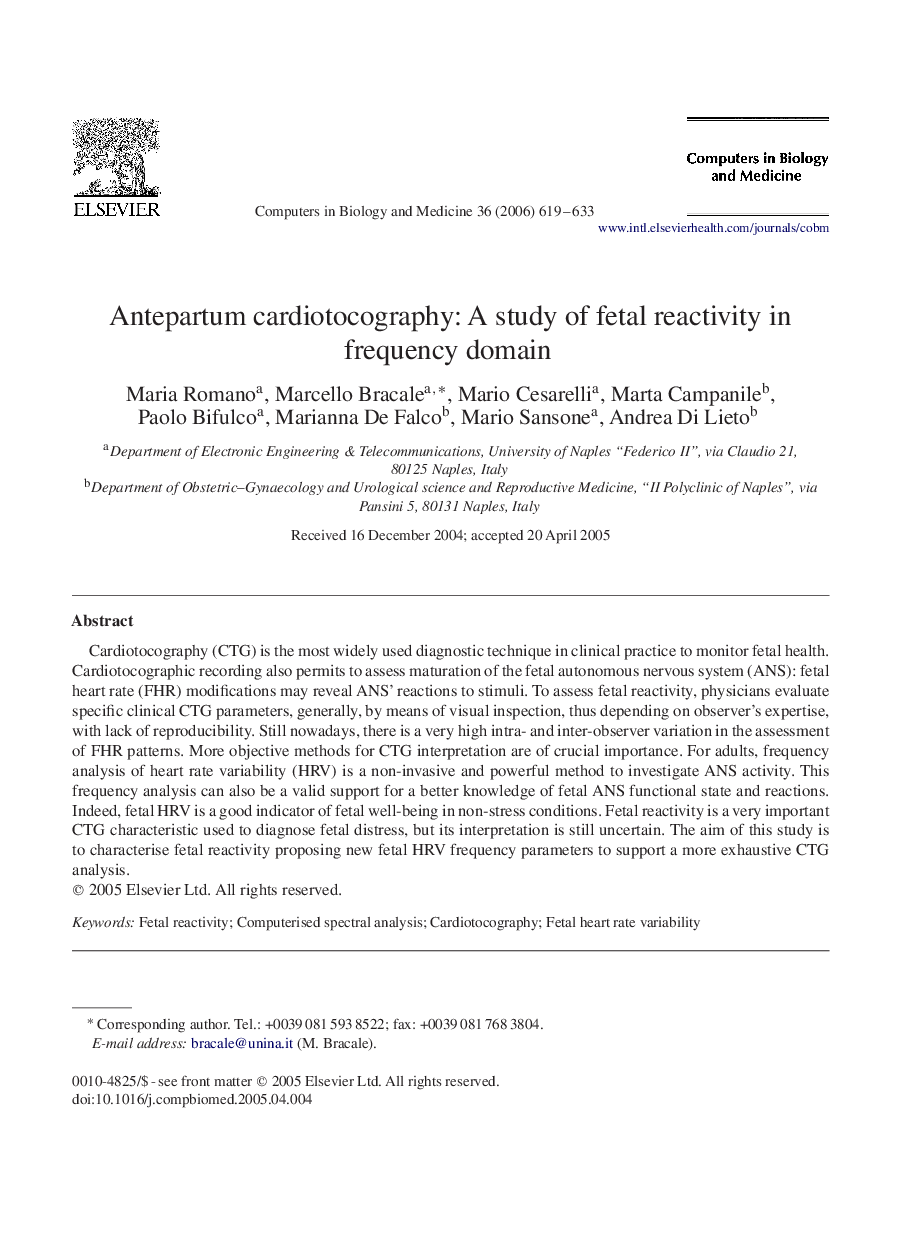| Article ID | Journal | Published Year | Pages | File Type |
|---|---|---|---|---|
| 506085 | Computers in Biology and Medicine | 2006 | 15 Pages |
Cardiotocography (CTG) is the most widely used diagnostic technique in clinical practice to monitor fetal health. Cardiotocographic recording also permits to assess maturation of the fetal autonomous nervous system (ANS): fetal heart rate (FHR) modifications may reveal ANS’ reactions to stimuli. To assess fetal reactivity, physicians evaluate specific clinical CTG parameters, generally, by means of visual inspection, thus depending on observer's expertise, with lack of reproducibility. Still nowadays, there is a very high intra- and inter-observer variation in the assessment of FHR patterns. More objective methods for CTG interpretation are of crucial importance. For adults, frequency analysis of heart rate variability (HRV) is a non-invasive and powerful method to investigate ANS activity. This frequency analysis can also be a valid support for a better knowledge of fetal ANS functional state and reactions. Indeed, fetal HRV is a good indicator of fetal well-being in non-stress conditions. Fetal reactivity is a very important CTG characteristic used to diagnose fetal distress, but its interpretation is still uncertain. The aim of this study is to characterise fetal reactivity proposing new fetal HRV frequency parameters to support a more exhaustive CTG analysis.
